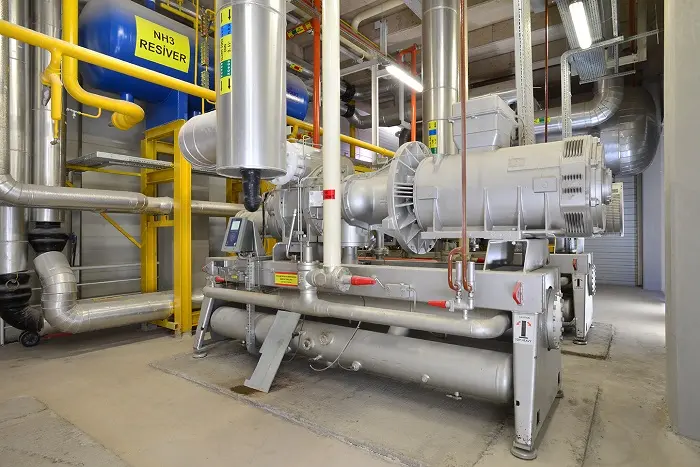Refrigeration systems play a critical role in various industries, from food preservation to air conditioning and industrial processes. Understanding the different types of refrigeration systems is essential for selecting the right system for specific applications. This article provides an in-depth look at the various refrigeration systems, their working principles, advantages, disadvantages, and applications.
1. Vapor Compression Refrigeration
Overview
Vapor compression refrigeration is the most common type of refrigeration system, widely used in household refrigerators, air conditioning units, and commercial refrigeration. It operates on the principle of compressing a refrigerant vapor, which then undergoes phase changes to absorb and release heat.
Components
Compressor: Compresses the refrigerant gas, raising its pressure and temperature.
Condenser: Cools the refrigerant, allowing it to condense into a liquid.
Expansion Valve: Reduces the pressure of the refrigerant, causing it to evaporate and absorb heat.
Evaporator: Absorbs heat from the environment, cooling the space.
Advantages
High efficiency and reliability.
Versatile applications in various industries.
Well-established technology with widespread availability.
Disadvantages
Requires regular maintenance.
Potential environmental impact due to refrigerant leaks.
Applications
Residential and commercial refrigeration.
Air conditioning systems.
Industrial cooling processes.
2. Absorption Refrigeration
Overview
Absorption refrigeration systems utilize heat energy to drive the refrigeration cycle, making them suitable for applications where waste heat is available. They are often used in large commercial and industrial setups.
Components
Absorber: Absorbs refrigerant vapor into a liquid absorbent.
Generator: Provides heat to separate the refrigerant from the absorbent.
Condenser: Cools and condenses the refrigerant.
Evaporator: Absorbs heat from the environment.
Advantages
Can use waste heat or renewable energy sources.
Less reliance on electricity, making them suitable for remote locations.
Disadvantages
Generally less efficient than vapor compression systems.
Larger and more complex.
Applications
Large-scale refrigeration and air conditioning systems.
Industrial processes utilizing waste heat.
3. Thermoelectric Refrigeration
Overview
Thermoelectric refrigeration uses the Peltier effect to create a temperature difference between two materials. This type of refrigeration is often found in small-scale applications.
Components
Thermoelectric Module: Contains semiconductor materials that create a temperature differential when electricity flows through them.
Heat Sink: Disperses heat from the hot side of the thermoelectric module.
Advantages
No moving parts, leading to low maintenance.
Compact and lightweight design.
Disadvantages
Lower cooling capacity compared to other systems.
Less energy-efficient for large applications.
Applications
Small refrigerators and coolers.
Portable cooling devices.
4. Evaporative Cooling Systems
Overview
Evaporative cooling relies on the principle of water evaporation to cool air. This system is particularly effective in dry climates and is widely used in industrial and agricultural applications.
Components
Cooling Pad: A material that absorbs water and allows air to pass through.
Fan: Draws warm air through the cooling pad, causing evaporation and cooling the air.
Advantages
Energy-efficient and environmentally friendly.
Low initial cost and easy maintenance.
Disadvantages
Less effective in humid climates.
Requires a continuous water supply.
Applications
Commercial and industrial cooling.
Agricultural applications for livestock cooling.
5. Magnetic Refrigeration
Overview
Magnetic refrigeration is an emerging technology that uses the magnetocaloric effect to achieve cooling. This method is gaining attention due to its energy efficiency and potential environmental benefits.
Components
Magnetocaloric Material: A material that exhibits temperature changes when subjected to a magnetic field.
Magnet: Generates a magnetic field to induce the magnetocaloric effect.
Advantages
Environmentally friendly, with no refrigerants.
Potential for high energy efficiency.
Disadvantages
Still in the experimental stage, with limited commercial applications.
Higher initial costs compared to conventional systems.
Applications
Future applications in residential and commercial cooling.
Potential use in cryogenics and medical technologies.
6. Cryogenic Refrigeration
Overview
Cryogenic refrigeration involves cooling substances to extremely low temperatures, often below -150°C. This technology is crucial in various scientific and industrial applications.
Components
Cryocooler: A device that achieves cryogenic temperatures using different methods, such as Joule-Thomson or Brayton cycles.
Refrigerants: Specialized gases like helium or hydrogen that remain in gaseous form at low temperatures.
Advantages
Essential for applications requiring ultra-low temperatures.
Used in advanced scientific research and space applications.
Disadvantages
High operational costs.
Complexity of systems.
Applications
Superconducting materials.
Spacecraft cooling systems.
Medical applications, such as cryopreservation.
Conclusion
Understanding the various types of refrigeration systems is crucial for selecting the appropriate technology for specific applications. From the widely used vapor compression systems to emerging technologies like magnetic refrigeration, each system has its unique advantages and disadvantages. By evaluating these systems, industries can optimize their cooling processes, ensuring efficiency and sustainability in their operations. Whether for residential use, industrial applications, or scientific research, the right refrigeration system can make all the difference.
Related topics:

